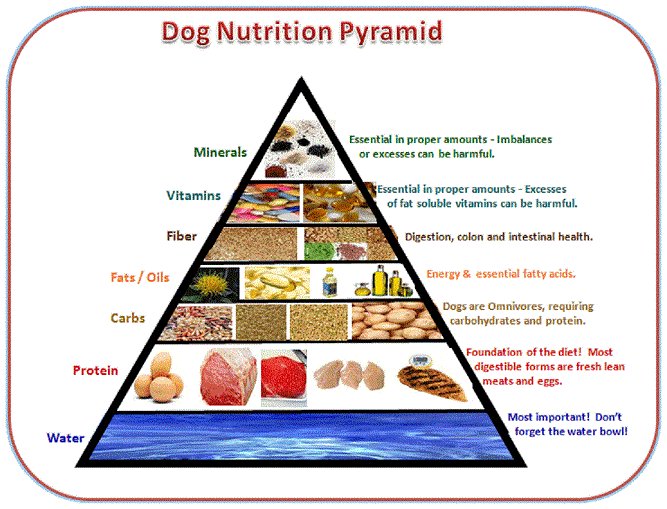Nutrition: Types of Dog Food - The Basics
No matter which type you choose, the most important factor in your decision should be finding a food that meets all of your dog's nutritional needs.

Although dog food doesn't come in as many shapes, colors, sizes, and flavors as human food, there are still quite a few varieties to choose from. No matter which type you choose, the most important factor in your decision should be finding a food that meets all of your dog's nutritional needs.
There are five main types of dog food:
Kibble/Dry
Dry food is the most economical type of commercial dog food, and this is the reason that many owners choose it for their dog. It also lasts for a long time and does not need to be refrigerated. Dry food can also help to keep your dog's teeth healthy, since chewing crunchy dry food helps to reduce tartar buildup. When it comes to choosing a specific dry food, read the ingredients carefully, and choose a brand that uses wholesome food as its primary ingredient.
Canned
Most dogs love canned, or wet, food; it has a long shelf life and is easy to find at any supermarket, but it can be expensive. For some owners, it's definitely worth the expense, but not every brand of commercial canned food provides the protein that your pup needs. The real question is how much digestible protein it provides. Indigestible protein will pass through your dog's system without being broken down into absorbable nutrients, so it's pretty much useless to him.
Also, most canned food is about 75 percent water. The higher the water content, the less nutrient content, so the more food your dog must consume in order to get the nutritional value his body needs. If you decide to feed your dog canned food, it's best to go with a kind that's labeled "100% nutritionally complete".
Semi-Moist
Commercial dog foods shaped like pork chops, burgers, or other meaty foods are called semi-moist foods. These kinds of foods are the least nutritional of all dog foods and contain many artificial flavors and colorings. They can be given to your dog as an occasional treat, but they should not be considered a diet in themselves, as they do not provide the nutrition that your pup requires.
Home Cooked
Some dog owners value the ability to be in complete control of their dog's diet. A home-cooked diet allows the owner to know for certain exactly what is in everything her dog eats and to be absolutely sure that his nutritional needs are being met. Feeding your dog a home-cooked diet is time consuming and expensive, but many owners think the extra effort is worth the peace of mind they gain. If you decide to feed your dog a home-cooked diet, get well acquainted with canine nutrition so you can be sure your dog is not missing out on any vital nutrients.
Raw
A raw diet consists of raw meat, preferably with some bones (never cooked bones, only raw) and organs mixed in, as bones are a natural source of phosphorus and calcium. This type of diet works well for many dogs, since dogs have short intestinal tracts and strong stomach acids, both of which make it easy for them to consume and digest raw food. Before transitioning your dog to a raw diet, talk to your veterinarian about the benefits and risks.
SOURCES
[1] "Pet MD"
[2] "Nylabone"
[3] " Cesar's Way"
[4] "Pet Education"
[5] "Pet Food Nutrition"
[6] "The Whole Dog Journal"
[7] "Dog Conspiracy"






















